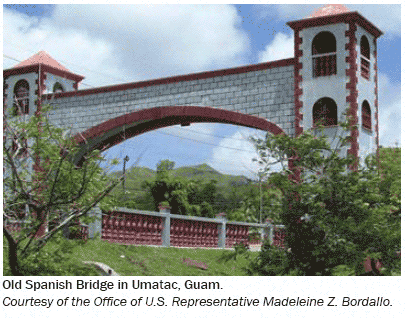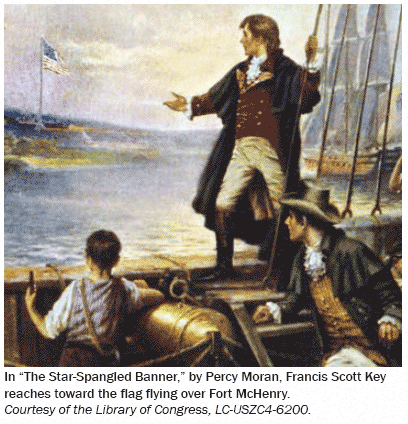
The Mississippi River is one of America’s longest rivers. It runs through 10 U.S. states. The Mississippi River was used by American Indians for trade, food, and water before Europeans came to America. It is nicknamed the "Father of Waters." Today, the Mississippi River is a major shipping route and a source of drinking water for millions of people. The Missouri River is also one of the longest rivers in the United States. The Missouri River is actually longer than the Mississippi River. It starts in Montana and flows into the Mississippi River. In 1673, the French explorers Jolliet and Marquette were the first Europeans to find the Missouri River. It is nicknamed "Big Muddy" because of its high silt content.
The Pacific Ocean is on the West Coast of the United States. It is the largest ocean on Earth and covers one-third of the Earth’s surface. The Pacific Ocean is important to the U.S. economy because of its many natural resources such as fish. Europeans first learned about the Pacific Ocean in the 16th century. Spanish explorer Vasco Nunez de Balboa reached the ocean in 1514 when he crossed the Isthmus of Panama. Later, Ferdinand Magellan sailed across the Pacific as he traveled around the Earth in search of spices. "Pacific" means "peaceful." Magellan named the Pacific Ocean the "peaceful sea," because there were no storms on his trip from Spain to the spice world. The U.S. states that border the Pacific Ocean are Alaska, Washington, Oregon, California, and Hawaii.
The Atlantic Ocean is on the East Coast of the United States. The ocean was named after the giant Atlas from Greek mythology. It is the second largest ocean in the world. The Atlantic Ocean is a major sea route for ships. It is one of the most frequently traveled oceans in the world. The Atlantic Ocean is also a source of many natural resources. The Atlantic Ocean was formed by the separation of the North American and European continents millions of years ago. The ocean covers about one-fifth of the Earth’s surface. In the middle of the ocean is the Mid-Atlantic Ridge, an immense underwater mountain range that extends the length of the Atlantic and is a source of volcanic activity. The U.S. states that border the Atlantic Ocean are Connecticut, Delaware, Florida, Georgia, Maine, Maryland, Massachusetts, New Hampshire, New Jersey, New York, North Carolina, Rhode Island, South Carolina, and Virginia.
There are five major U.S. territories: American Samoa, Guam, the Northern Mariana Islands, Puerto Rico, and the U.S. Virgin Islands. A U.S. territory is a partially self-governing piece of land under the authority of the U.S. government. U.S. territories are not states, but they do have representation in Congress. Each territory is allowed to send a delegate to the House of Representatives. The people who live in American Samoa are considered U.S. nationals; the people in the other four territories are U.S. citizens. Citizens of the territories can vote in primary elections for president, but they cannot vote in the general elections for president.

The northern border of the United States stretches more than 5,000 miles from Maine in the East to Alaska in the West. There are 13 states on the border with Canada. The Treaty of Paris of 1783 established the official boundary between Canada and the United States after the Revolutionary War. Since that time, there have been land disputes, but they have been resolved through treaties. The International Boundary Commission, which is headed by two commissioners, one American and one Canadian, is responsible for maintaining the boundary.
The border between the United States and Mexico is about 1,900 miles long and spans four U.S. states - Arizona, California, New Mexico, and Texas. The United States established the border with Mexico after the Mexican-American War and the Gadsden Purchase in 1853. The Gadsden Purchase helped the United States get the land it needed to expand the southern railroad. The United States bought this land for $10 million. The land bought through the Gadsden Purchase is now part of the states of Arizona and New Mexico. The U.S. border with Mexico is one of the busiest international borders in the world.
When the Constitution established our nation in 1789, the capital of the United States was in New York City. Congress soon began discussing the location of a permanent capital city. In Congress, representatives of northern states argued with representatives of southern states. Each side wanted the capital to be in its own region. As part of the Compromise of 1790, the capital would be located in the South. In return, the North did not have to pay the debt it owed from the Revolutionary War. George Washington chose a location for the capital along the Potomac River between Maryland and Virginia. As part of the compromise, Philadelphia, Pennsylvania, became the temporary new location for the capital. In 1800, after 10 years, the capital was moved to its current location of Washington, D.C.
The Statue of Liberty is on Liberty Island, a 12-acre island in the New York harbor. France gave the statue to the United States as a gift of friendship. French artist Frederic-Auguste Bartholdi made the statue. It shows a woman escaping the chains of tyranny and holding a torch symbolizing liberty. The Statue of Liberty was dedicated on October 28, 1886, 110 years after the signing of the Declaration of Independence. President Grover Cleveland accepted the gift for the American people. The Statue of Liberty is a well-known symbol of the United States and of freedom and democracy. The Statue of Liberty became a symbol of immigration because it was located next to Ellis Island, which was the first entry point for many immigrants during the great waves of immigration. The Statue of Liberty was the first thing new immigrants saw as they approached New York harbor.
There are 13 stripes on the flag because there were 13 original colonies. We call the American flag "the Stars and Stripes." For 18 years after the United States became an independent country, the flag had only 13 stripes. In 1794, Kentucky and Vermont joined the United States, and two stripes were added to the flag. In 1818, Congress decided that the number of stripes on the flag should always be 13. This would honor the original states that were colonies of Great Britain before America’s independence.
Each star on the flag represents a state. This is why the number of stars has changed over the years from 13 to 50. The number of stars reached 50 in 1959, when Hawaii joined the United States as the 50th state. In 1777, the Second Continental Congress passed the first Flag Act, stating, "Resolved, That the flag of the United States be made of thirteen stripes, alternate red and white; that the union be thirteen stars, white in a blue field, representing a new Constellation."
During the War of 1812, British soldiers invaded the United States. On the night of September 13, 1814, British warships bombed Fort McHenry. This fort protected the city of Baltimore, Maryland. An American named Francis Scott Key watched the bombing and thought that the fort would fall. As the sun rose the next morning, Key looked toward the fort. He saw that the flag above the fort was still flying. This let him know that the British had not defeated the Americans. Key immediately wrote the words to a poem he called the "Defence of Fort M’Henry." The words of the poem became "The Star-Spangled Banner." Congress passed a law in 1931 naming "The Star-Spangled Banner" the official national anthem. Here are the words to the first verse of the national anthem:
The Star-Spangled Banner
Oh, say, can you see, by the dawn’s early light,
What so proudly we hailed at the twilight’s last gleaming?
Whose broad stripes and bright stars, thro’ the perilous fight;
O’er the ramparts we watched, were so gallantly streaming.
And the rockets red glare, the bombs bursting in air,
Gave proof through the night that our flag was still there.
Oh, say, does that star-spangled banner yet wave
O’er the land of the free and the home of the brave?

In the United States, we celebrate Independence Day on July 4 to mark the anniversary of the adoption of the Declaration of Independence. After signing the Declaration of Independence, John Adams wrote to his wife, "I am apt to believe that it will be celebrated, by succeeding Generations, as the great anniversary Festival." The Declaration of Independence, written by Thomas Jefferson, explained why the colonies had decided to separate from Great Britain. Americans celebrate the Fourth of July as the birthday of America, with parades, fireworks, patriotic songs, and readings of the Declaration of Independence.
Many Americans celebrate national or federal holidays. These holidays often honor people or events in our American heritage. These holidays are "national" in a legal sense only for federal institutions and in the District of Columbia. Typically, federal offices are closed on these holidays. Each state can decide whether or not to celebrate the holiday. Businesses, schools, and commercial establishments may choose whether or not to close on these days. Since 1971, federal holidays are observed on Mondays except for New Year’s Day, Independence Day, Veterans Day, Thanksgiving, and Christmas.